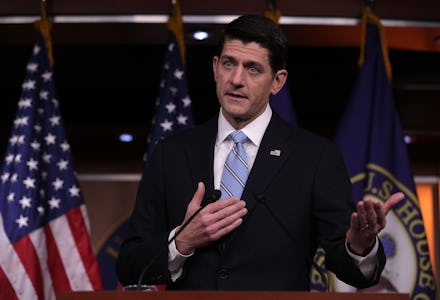Who controls the House of Representatives? Here's what House will look like in 2017

In the congressional races in 2016 election, the Republican Party lost a few key races, but it hasn't kept them from claiming a mandate.
Republicans slightly decreased their share of seats in the House of Representatives, going from 247 to 241 out of 435 seats. In the Senate, Republicans lost two seats, going from 54 to 52. In both cases the party retained its majority. Thanks to then-Senate Majority Leader Harry Reid's decision to invoke the so-called "nuclear option" in 2013, Democrats will effectively have little power to filibuster Trump's cabinet picks.
In general, the ideological bent of the Republican Party has slid far to the right in recent years, and the party's delegation to the House and Senate has generally mirrored that shift. While Trump may not be an orthodox conservative on some issues, his choice of cabinet officials suggest his administration will one of the most conservative ever assembled. Early indications are thus that a theoretical future President Trump and GOP leadership in Congress will be generally aligned on many big-picture disputes, and thus will likely work in lockstep on key conservative issues like tax and entitlement cuts.
The United States Supreme Court remains with just eight justices following the death of Justice Antonin Scalia in 2016. Republicans have continued to block Barack Obama's nominee for the role, D.C. Circuit Court of Appeals Chief Judge Merrick Garland. It is expected that the position will be filled with a conservative justice after Trump's inauguration in January.
Following that, the GOP will have total control of the direction of the federal government, assuming few congressional defections, a cooperative Supreme Court and no Trump impeachment, until at least 2018, when midterm elections will occur. If Democrats seize the initiative and take at least the Senate in 2018, the second half of the Trump presidency could be the kind of slog Obama has dealt with for years.